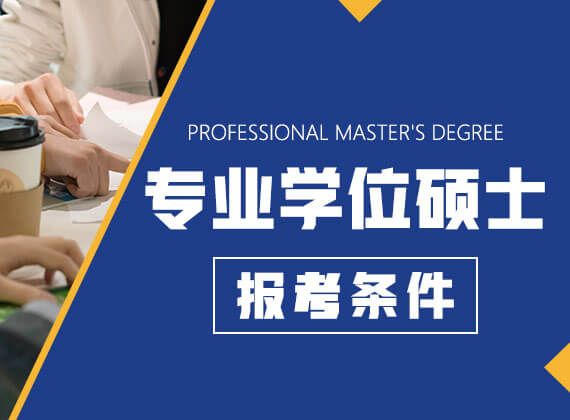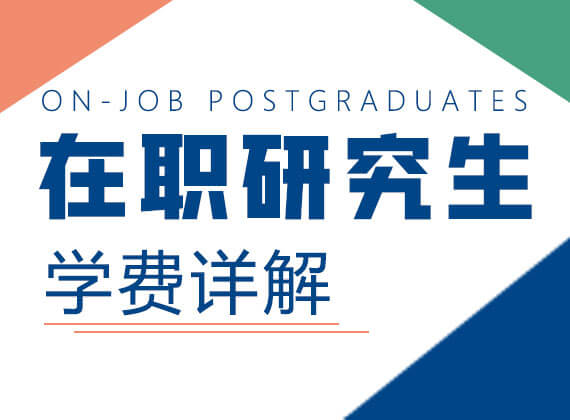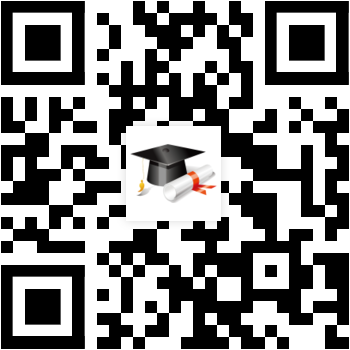2009年GCT英语模拟试题练习01
来源:在职研究生招生信息网 发布时间:2011-10-24 14:29:13
Directions:
In this part there are 10 incomplete sentences, each with four suggested answers. Choose the one you think is the best answer. Mark your choice on the Answer Sheet by drawing with a pencil a short bar across the corresponding letter in the brackets.
1. When he was a student, his father gave him a monthly ______ towards his expenses.
A. currency B. pay C. allowance D. permission
2. Martin Luther King, the great Black leader in the movement against racial discrimination, was ______ the Nobel Prize for peace for his outstanding contribution to world peace.
A. rewarded B. given C. awarded D. offered
3. He is obviously quite embarrassed about it because he ______ me to tell anyone.
A. banned B. forbade C. protected D. prohibited
4. If you do something on your own ______, you plan it and decide to do it yourself without anyone telling you what to do.
A. initial B. initiative C. initiate D. beginning
5. The goal is to make higher education available to everyone who is willing and capable ______ his financial situation.
A. with respect to B. in accord with C. regardless of D. in terms of
6. What the leader does and says ______ of great importance.
A. was B. is C. are D. were
7. By the end of next year, they ______ three modern hotels there.
A. will build B. will be building C. will have been built D. will have built
8. The material of the course is arranged in twenty-four teaching units, each _____ of an introduction, a text, and some written exercises.
A. consist B. consisting C. consists D. is consisting
9. _____ it left to me to decide, I would never hesitate to choose the former.
A. If B. Were C. Had D. Should
10. ______ he was an old customer, the boss allowed ten per cent discount off the prices of the goods.
A. Give that B. Giving that C. To give that D. Given that
Part Two Reading Comprehension
Directions:
In this part there are 4 passages followed by questions or unfinished statements, each with four suggested answers. Choose the one you think is the best answer. Mark your choice on the Answer Sheet by drawing with a pencil a short bar across the corresponding letter in the brackets.
Questions 11—15 are based on the following passage:
Ever since humans have lived on the earth, they have made use of various forms of communication. Generally, this expression of thoughts and feelings has been in the form of oral speech. When there is a language barrier, communication is completed through sign language in which motions stand for letters, words, and ideas. Tourists and the people unable to hear or speak have had to turn to this form of expression. Many of these symbols of whole words are very lively and exact and can be used internationally; spelling, however, cannot.
Body language sends ideas or thoughts by certain actions, either meaningfully or not. A wink can be a way of showing that the party is only joking. A nod means agreement, while shaking the head indicates disagreement.
Other forms of nonlinguistic language can be found in Braille (a system of raised dots read with the fingertips), signal flags, Morse code, and smoke signals. Road maps and picture signs also guide and warn people. While language is the most common form of communication, other systems and techniques also express human thoughts and feelings. (183 words)
11. Which of the following statements best summarizes this passage?
A. When language is a barrier, people will find other forms of communication.
B. Everybody uses only one form of communication.
C. Nonlinguistic language is invaluable to foreigners.
D. Although other forms, except for language, of communication exist, they are of little value.
12. Which of the following statements in NOT true?
A. There are many forms communication in use today.
B. Language is the most common form of communication.
C. Tourists are unable to use an oral form of communication.
D. Ideas and thoughts can be expressed by body language.
13. Which form other than oral speech could be most commonly used among blind people?
A. Picture signs. B. Braille. C. Body language. D. Signal flags.
14. Sign language is said to be very lively and exact and can be used meaningfully except for ______.
A. spelling B. idea C. whole words D. expressions
15. How many different forms of communication are mentioned here?
A. 5. B. 7. C. 9. D. 3.
Questions 16—20 are based on the following passage:
More and more often we hear of people talking about Karaoke. But what on earth it is about, still remains a question for many people.
Karaoke is a sort of acoustic equipment which was originally invented in Japan around the middle of the 1970’s. It means “a band without people” in Japanese. In fact, it is just a music tape without words. This equipment first appeared in some public houses and snack bars, and mainly for the customers to enjoy and relax themselves. Most of the music in Karaoke was popular music. Therefore, at times, when anyone felt like it, he might sing songs to the accompaniment of the music that came from the equipment.
Shortly after its invention, Karaoke was spread to the whole world. It was introduced to China and was welcomed by many people. Although you are not a good singer, or even sometimes you may sing out of tune, you can always enjoy yourself by singing Karaoke. (161 )
16. In this passage “band” means “group of person ______”。
A. who play games on the sports ground
B. who play music together
C. living in the same neighborhood
D. doing things together under a leader and with a common purpose
17. Karaoke is just ______.
A. a cassette tape with only music B. a cassette tape recorder
C. a band from Japan D. a voice recording equipment
18. Japanese invented Karaoke ______.
A. in the middle of 1970 B. in the middle of the 1970’s
C. in the year 1970 D. in the year 1970’s
19. People went to public houses and snack bars ______ when Karaoke appeared.
A. to have a good time B. to have something to drink
C. to relax themselves D. both A and C
20. Karaoke was spread to the whole world ______.
A. as soon as it was invented B. long before
C. not long after it was invented D. before long
Questions 21—25 are based on the following passage:
Do people in your country hug in the street? In some countries, it is common for people to show affection in public places. In the United States, for example, we often see couples hold hands, hug and kiss on the street, in the park, in the restaurant and even on trains and buses. But in some other countries, people never show affection in public places because their customs don’t permit this, for example, in Korea and China. So, when Korean and Chinese people visit the United States, they sometimes feel very surprised when they see Americans hug and kiss on the street.
In some countries, friends show physical affection to each other. In some South American countries, female friends walk arm in arm when they walk along the street together. In Italy and Russia, male friends often kiss each other on both cheeks when they greet. In most countries, men don’t kiss or hug when they greet each other. They usually shake hands or pat each other on the back.
People around the world are different in the amount, manner and situation in which they touch each other. (188 words)
21. The main idea of this passage is ______.
A. the customs in Korea and China are exactly the same
B. Koreans and Americans can never understand each other
C. South Americans are more friendly than North Americans
D. different countries permit different amounts of toughing in public
22. Chinese and Korean people feel surprised when they see Americans hug and kiss on the street because ______.
A. they never hug or kiss
B. they themselves are polite
C. their own customs don’t permit such conduct
D. kissing each other is not allowed on the street
23. Which of the following is true according to the passage?
A. Chinese people often kiss on the street.
B. In all countries public affection is permitted.
C. In many countries, men shake hands when they greet each other.
D. The Americans are not as polite as people in other countries.
24. Which of the following is NOT TRUE?
A. Social customs are different in different countries.
B. Customs in the United States permit public affection.
C. Customs in China don’t allow people to show affection in public.
D. Women in South America never touch each other.
25. From the passage we can guess ______.
A. Korean people often kiss and hug on American streets
B. people all over the world like to kiss their friends
C. Americans like to kiss and hug Korean people on the street
D. it may be strange to Americans to see two men kiss on both cheeks
Questions 26—30 are based on the following passage:
In this experiment, Robert Rosenthal and Lenore Jacobson studied the way that innocent subjects might be affected by another person’s expectations. First, they gave an intelligence test to the entire student body at an unnamed primary school in the San Francisco area. Then, they selected students at random and told their teachers that the students’ tests had shown that they were about to experience a period of rapid learning. Teachers did not change their methods or materials for teaching the selected students, but at the end of the year, when the test was administered again, first and second graders who had been selected had, in fact, gained twice as many I.Q. points as other children. The experiments concluded that they had performed better because they had been given more attention. Teachers had challenged them and had given them more positive reinforcement because they had expected more from them. (148 words)
26. What was tested in this experiment?
A. The influence of I.Q. tests.
B. The influence of selected teachers.
C. The influence of teacher expectations.
D. The influence of teaching methods and materials.
27. How were the subjects chosen to take part in the experiment?
A. They were selected by their teachers.
B. They were selected by the experimenters.
C. They agreed to take part in.
D. They passed a test.
28. The children who were selected for the experiment gained more I.Q. points than the others because they were ______.
A. more clever
B. taught by different teachers
C. taught with new materials and methods
D. given more encouragement by their teachers
29. Teachers gave the selected children more attention because ______.
A. they were not as clever as the other children
B. they were told to teach them in a different way
C. they expected them to learn faster
D. they did not want to challenge them
30. What was the conclusion drawn by the experiment?
A. A clever child scores higher on I.Q. tests.
B. Teachers should use different teaching methods and materials for clever children.
C. The expectations of teachers influence children’s learning.
D. The I.Q. test used in San Francisco school should be changed.
Part Three Cloze Test
Directions:
For each blank in the following passage, choose the best answer from the choices given below. Mark your answer on the Answer Sheet by drawing with a pencil a short bar across the corresponding letter in the brackets.
Nobody likes taking exams; exams in your own language can be stressful enough but somehow exams in a foreign language always seem to cause more worry and anxiety. Well, the good news is that, if you --31-- some simple steps, taking English language exams can be really quite --32-- . It won't exactly be fun, but it certainly shouldn't give you too many headaches or sleepless nights.
If you are planning to --33-- one of the well-known exams such as Cambridge First Certificate, you will probably find that there's a preparation course --34-- at a school near you. Check that the school has a good --35-- of exam success and that the teacher is --36-- .It is a good idea to ask if you will be given homework and --37-- your written work will be marked by a teacher who knows the level of English --38-- by the exam.
If you take --39-- exam preparation course your teacher will give you all the information you need and you will find that --40-- in a class helps you to study more effectively. But you will still need to put in a lot of work yourself (after all, the teacher can't take the exam for you!)。
31. A. take B. walk C. follow D. keep
32. A. painful B. painless C. enjoyable D. marvelous
33. A. get B. prepare C. participate D. take
34. A. ready B. available C. offering D. existing
35. A. management B. foundation C. expectation D. record
36. A. experience B. experiencing C. experienced D. experiences
37. A. how B. that C. what D. whether
38. A. required B. determined C. corresponded D. accorded
39. A. a B. an C. the D. one
40. A. going B. coming C. being D. getting:
Part Four Dialogue Completion
Directions:
There are 10 short incomplete dialogues between two speakers, each followed by four choices marked A. B. C. and D. Choose the answer that appropriately suits the conversational context and best completes the dialogue. Mark your answer on the answer sheet by drawing with a pencil a short bar across the corresponding letter in the brackets.
41. Brown: How are you?
Brake: I’m fine. Thank you. And you?
Brown: ________.
A. I, too. B. Fine. C. Thanks. D. Me, too.
42 —I’m told John’s mother is ill.
—________.
A. I’m sorry to hear that. B. I’m sad. C. Don’t worry. D. Take it easy.
43. —________?
—It’s Sunday.
A. What date is it today B. What’s the date C. What day is it today D. What’s day
44. —My watch is not working. ________?
—It’s ten past eleven.
A. What time is it B. What’s the time
C. What is time by your watch D. What time is it by your watch
45. Bob: Don’t you like to eat Korean food?
John: ________.
A. No, I prefer to have Chinese noodles
B. No, Korean food is not real to my taste
C. No, because Korean food is very good
D. No, I like very much to eat Korean food
46. —It’s very kind of you to help me with my English.
—________.
A. Not at all B. Never mind C. That’s all right D. You’re so welcome
47. —________?
—I’d like to see a pair of brown shoes.
A. What do you want B. What can I do for you C. What do you like D. Do you want to buy something
48. —Shall I use your dictionary?
— ________.
A. Of course, you can. B. Certain, you may C. Surely, you can’t D. No, please get out
49. —East Bouren 54655.
—Hello. John here. Can I speak to Mary, please?
A: ________
B: OK.
A. Who’s that speaking? B. Could you take a message?
C. Hold the line, please. D. I think she’s gone shopping.
50. —How’s your brother these days?
—He hasn’t been too well just recently.
—________. What’s the matter?
—I think he’s been overworking.
A. It’ll be pleased to hear you ask after him B. I’m sorry to hear that
C. That’s not too bad D. I’ll tell him what you said
上一篇: 2010年GCT英语模拟试题练习-01
下一篇: 2009年GCT英语模拟试题练习02
























